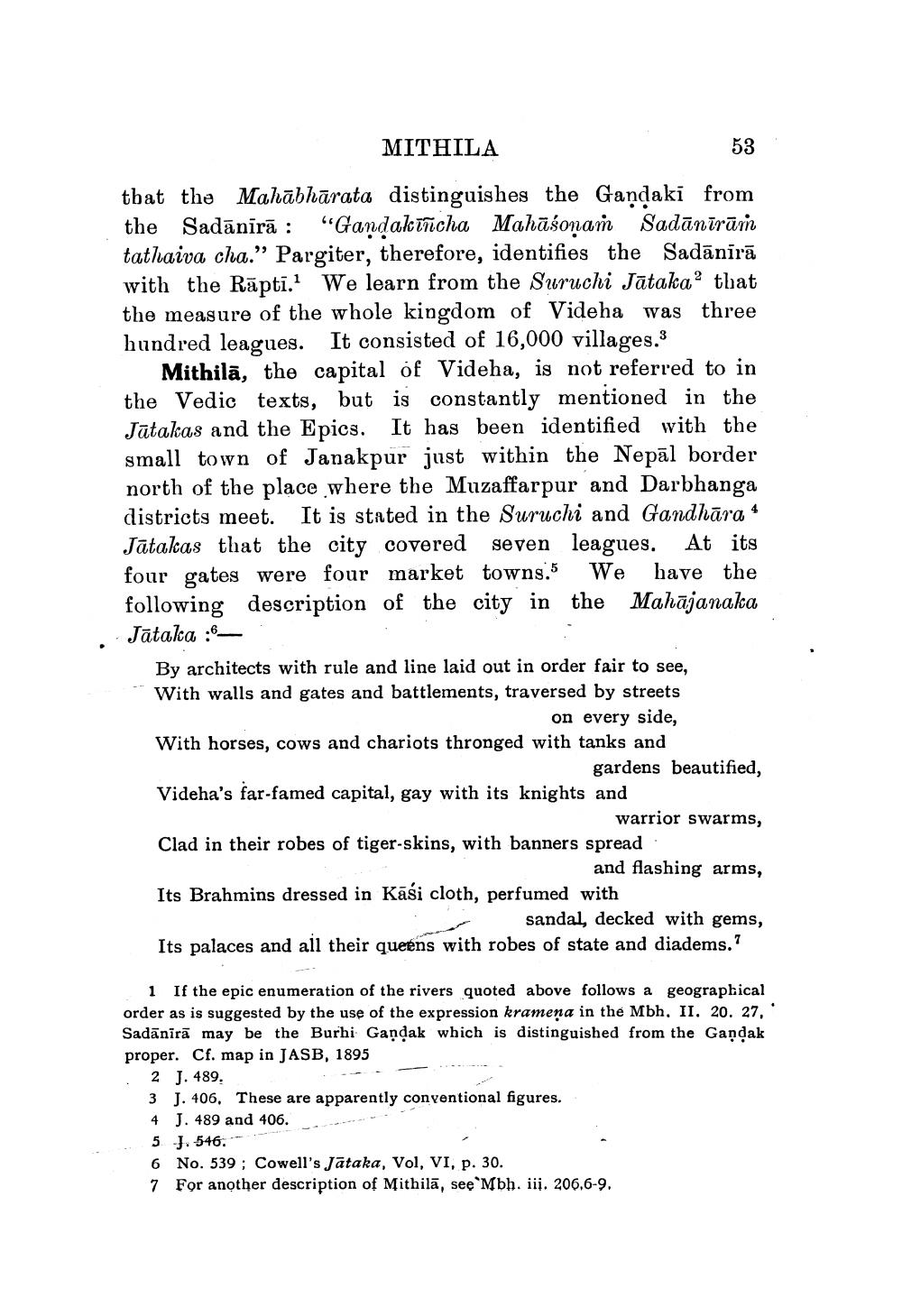________________
MITHILA
53
tbat the Mahābhārata distinguishes the Gandaki from the Sadānīrā : "Gandaktīicha Mahāśonam Sadānīrārn tathaiva cha.” Pargiter, therefore, identifies the Sadānīrā with the Rāpti.' We learn from the Suruchi Jatakao that the measure of the whole kingdom of Videha was three hundred leagues. It consisted of 16,000 villages.3
Mithilā, the capital of Videha, is not referred to in the Vedic texts, but is constantly mentioned in the Jatakas and the Epics. It has been identified with the small town of Janakpur just within the Nepāl border north of the place where the Muzaffarpur and Darbhanga districts meet. It is stated in the Suruchi and Gandhāra * Jātalas that the city covered seven leagues. At its four gates were four market towns. We have the following description of the city in the Mahājanaka Jātaka :
By architects with rule and line laid out in order fair to see, With walls and gates and battlements, traversed by streets
on every side, With horses, cows and chariots thronged with tanks and
gardens beautified, Videha's far-famed capital, gay with its knights and
warrior swarms, Clad in their robes of tiger-skins, with banners spread
and flashing arms, Its Brahmins dressed in Kāśi cloth, perfumed with
sandal, decked with gems, Its palaces and all their queens with robes of state and diadems.?
1 If the epic enumeration of the rivers quoted above follows a geographical order as is suggested by the use of the expression kramena in the Mbh. II. 20. 27, Sadānīrā may be the Burhi Gandak which is distinguished from the Gandak proper. Cf. map in JASB, 1895 . 2 J. 489.
3 J. 406. These are apparently conventional figures. 4 J. 489 and 406. 5 }. 546. 6 No. 539 ; Cowell's Jataka, Vol, VI, p. 30. 7 For another description of Mithila, seę Mbh. iij. 206,6-9.




